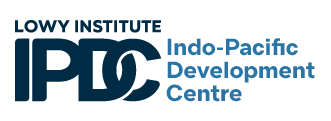A new UN report on rising sea levels, unveiled at the Pacific Islands Forum Leaders Meeting last month in Tonga, has brought the harsh realities of climate change into sharp focus. Global mean sea levels have surged more than 10 centimetres since 1993, posing an existential threat to low-lying islands such as Tuvalu.
The mechanics of how the new Fund will raise and distribute its financial resources are still to be worked out.
The associated effects of sea level rise – including loss of livelihoods, infrastructure, and culture – are prime examples of the unavoidable or irreversible climate change impacts that many countries now face, known collectively under the Paris Agreement as “Loss and Damage”.
Current pledges to reduce greenhouse gas emissions suggest the world is on track for 2.3°C warming, far beyond the Paris Agreement’s 1.5°C target to avoid catastrophic consequences. The ensuing financial burden of Loss and Damage is expected to be staggering, with best estimates suggesting that developing countries could require between $200-400 billion annually by 2030. Yet, financial support from wealthy countries to respond to Loss and Damage has been absent – until now.
A dedicated Loss and Damage Fund was established in 2022 at the UN climate negotiations in Egypt following 30 years of fierce negotiations. The so-called Fund for Responding to Loss and Damage will support reconstruction efforts in developing countries following extreme weather events such as cyclones and floods, and address consequences from slow-onset challenges such as rising sea levels (relocation for example). It is also the first multilateral fund with a mandate to provide finance for non-economic losses such as to culture and territory.
However, the mechanics of how the new Fund will raise and distribute its financial resources are still to be worked out.
A new Lowy Institute Policy Brief emphasises that the new Fund must avoid shortcomings of other multilateral climate funds to fill a key gap in the international financial landscape. The Brief identifies several recommendations to guide the newly appointed Board in shaping the Fund and meeting its mandate to support particularly climate-vulnerable developing countries.
The financial burden of Loss and Damage is expected to be staggering, with best estimates suggesting that developing countries could require between $200-400 billion annually by 2030.
First, crafting a fair allocation mechanism to distribute funds is crucial but highly contentious. Developed countries increasingly point to rising emission levels and economic growth in emerging economies, with China leading the charge – its emissions now more than triple those of the United States. The allocation of funding should reflect responsibility, capacity, and in-country climate action efforts to ensure fair access for particularly vulnerable countries.
The Brief suggests adopting a weighted multi-factor allocation mechanism. A rise in a recipient country’s greenhouse gas emissions or GDP would reduce its funding entitlement, while factors such as climate vulnerability or efforts to build resilience would boost eligibility for funding.
Grants should be the focus of the Fund but concessional loans are an option for financially capable countries as this can significantly scale up available finance. For example, the Australia-Indonesia Partnership for Reconstruction and Development following the 2004 tsunami in Indonesia was a A$1 billion aid package comprising of a A$500 million concessional loan matched with an equal amount in grants.
The Fund also needs to ensure resources can be accessed directly by national governments and entities, with simplified procedures. Currently, it is common practice that a third party, such as the World Bank, designs, implements and manages a project’s funds.
However, working through the national systems of developing countries results in more country-relevant outcomes. Therefore, financial assistance should flow directly to governments as earmarked budget support, to be spent flexibly on Loss and Damage initiatives identified autonomously by the recipient. In addition, programs that allow for flexibility to adapt to changing circumstances should be embraced, complementing the traditional model of funding standalone projects.
This also includes non-economic losses for which no concrete solutions exist yet. The Policy Brief provides three suggestions: funds to avoid irreversible losses by, for instance, relocating artefacts; payments to make good the losses from livelihood disruption (such as school fees or mortgages); and financial support for symbolic mourning or celebratory ceremonies.
The Fund also needs to ensure it is sufficiently resourced. Early pledges equate to US$700 million, a miniscule amount considering the billions required. Yet, other than voluntary contributions to the Fund, no formal mechanism has been established to grow the Fund. A solution is to create a continuous, predictable funding stream through the engagement of philanthropic organisations and by encouraging countries to introduce voluntary market mechanisms in their own economies.
The Fund should leverage growing interest and recognition in the philanthropic sector about the urgent need to address the climate crisis. In a recent initiative, the ClimateWorks Foundation invested an initial $50 million in climate adaptation and resilience efforts in the most vulnerable parts of the world. The Policy Brief suggests engaging with philanthropists to establish a continuous financial flow into the Fund.
Voluntary market mechanisms also show great promise. One option is a small air fare levy, such as the one France introduced in 2006 alongside other developed (Norway) and developing countries (Republic of Congo), to support the global health initiative Unitaid.
There are a series of challenges to navigate before the new Fund can be fully operationalised. But our Policy Brief provides concrete suggestions for solutions that will enable the Fund to maximise its impact, ensuring that its resources reach those most in need.


